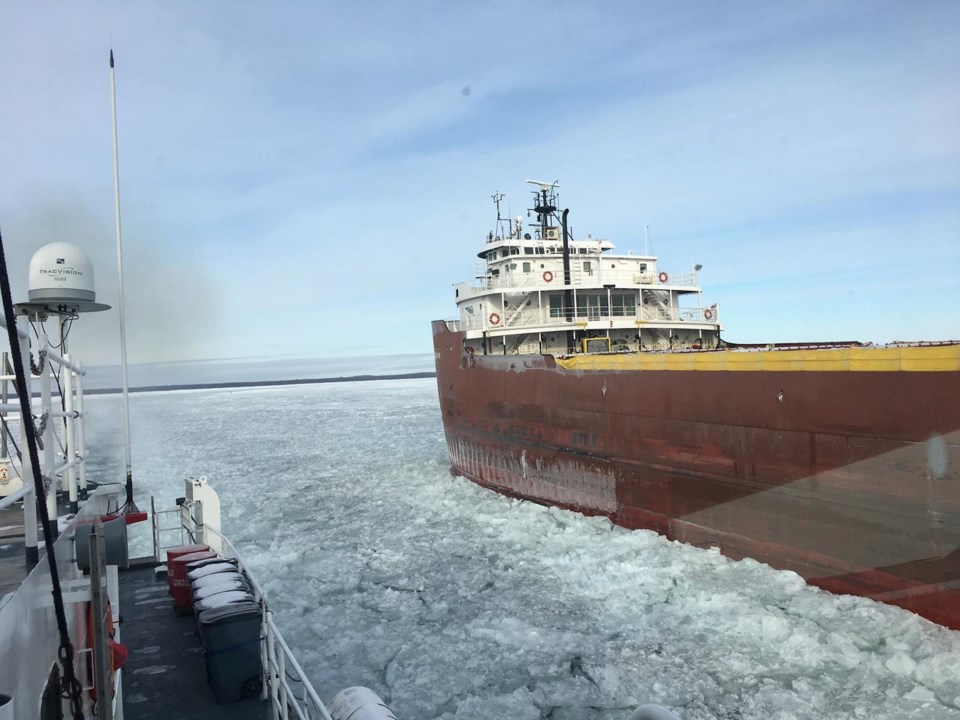The U.S. Coast Guard has launched its annual ice breaking operations in preparation for projected ice growth along western Lake Superior.
U.S. Coast Guard Cutter Biscayne Bay will take care of ice-breaking in the region during Operation Taconite, including ports in Duluth and Thunder Bay, as well as the St. Marys River, the Straits of Mackinac, and Georgian Bay.
Full text of a news release issued today by U.S. Coast Guard Sector Sault Ste. Marie follows:
SAULT STE. MARIE, MICH. – U.S. Coast Guard Sector Sault Ste. Marie commenced Operation Taconite in advance of expected ice growth in the commercial ports of western Lake Superior. Before ice impedes commercial navigation, an icebreaker was assigned to the region.
Monday, U.S. Coast Guard Cutter Biscayne Bay was assigned to manage the ice breaking needs of western Lake Superior, specifically the twin ports of Duluth, Minn. and Superior, Wis. as well as the Port of Thunder Bay, Ont. As ice growth expands on the Great Lakes, additional Coast Guard ice breakers will join the operation.
Operation Taconite is the Coast Guard’s largest domestic icebreaking operation. The operation encompasses Lake Superior, St. Marys River, the Straits of Mackinac, Georgian Bay, and all of Lake Michigan. Various commercial waterways may close after due consideration is given to the protection of the marine environment, the need for cross-channel traffic (e.g. ferries) and the safety of the island residents; who in the course of their daily business use naturally formed ice bridges for transportation to and from the mainland.
The implementation of Operation Taconite places additional movement criteria on commercial ships plying the Western Lakes, St. Marys River, and the Straits of Mackinac. These measures may include restricting tanker transits to daylight in the presence of ice, reducing speeds by 2 miles per hour in specified locations to reduce incidental ice breaking, and requiring additional voice and position reporting points throughout the operation’s area of responsibility.
The Coast Guard recommends all recreational ice users plan their activities carefully, dress appropriately, use caution on the ice, and stay away from shipping channels. Recreational users and island residents should stay tuned to local media resources for the status of regional waterway closures.
